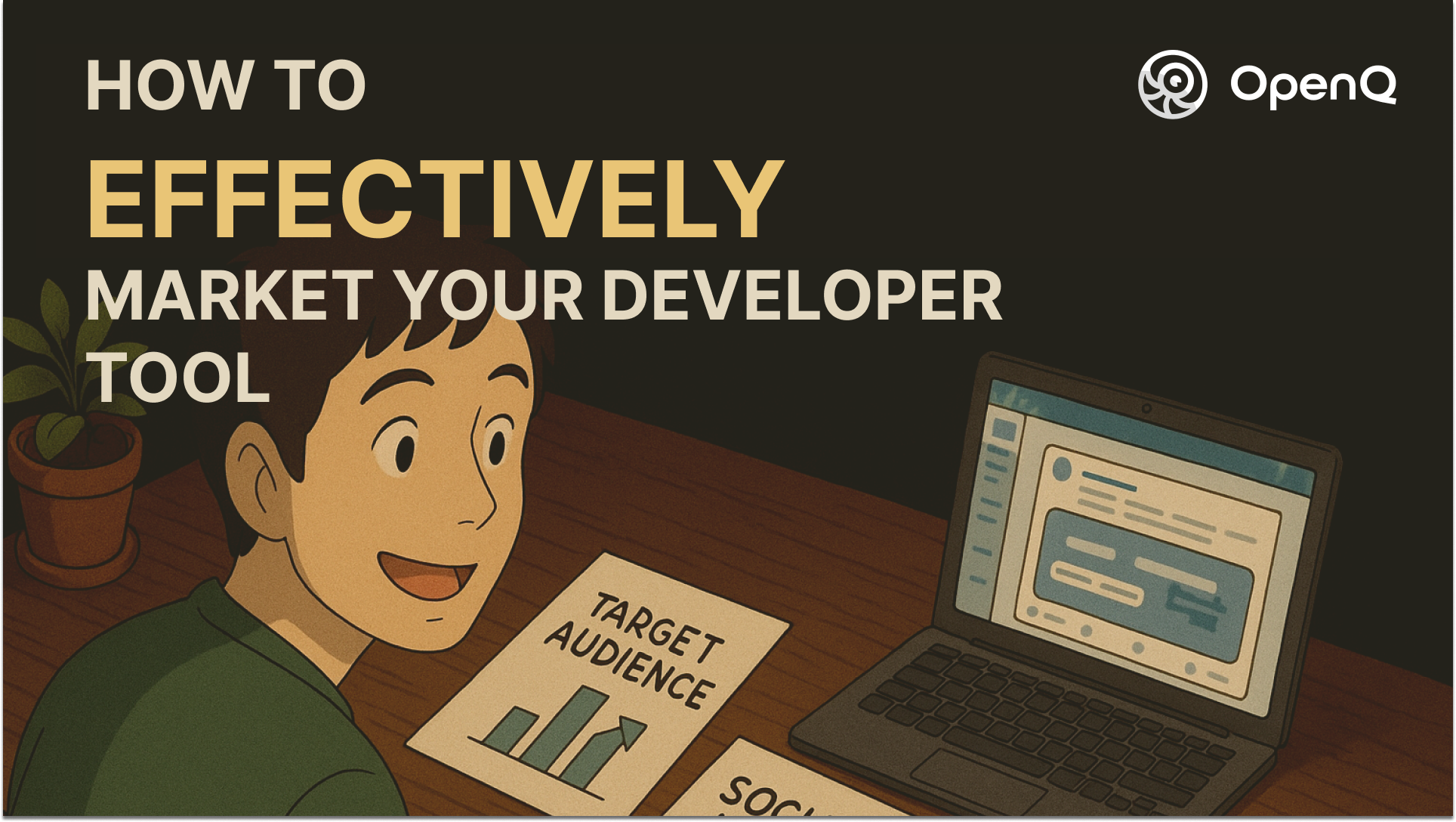How to effectively market your developer tool
Developer marketing strategies to boost engagement and drive adoption

How to effectively market your developer tool
In a previous article, we explained how to understand your developer persona. If you haven't checked it out yet, start here—it's an essential first step. Understanding your persona prevents you from wasting effort on communities that aren't a good fit and helps you focus your marketing precisely where it matters.
Once your developer persona is clearly defined, the next step is to identify the communities that match this profile. By engaging effectively with these communities, you'll be able to craft targeted developer marketing strategies designed to pique curiosity, spark adoption, and turn casual users into passionate advocates. Here's how to do it.
Finding developer communities that fit your persona
Identifying the right developer communities is crucial. It involves a bit of detective work, but the payoff is huge. Here's your game plan:
Go Where Developers Hang Out
Start by scouting popular developer spaces—think GitHub, Stack Overflow, Discord servers, Reddit, Slack channels, Twitter, and LinkedIn groups. You're looking for places where conversations about technologies relevant to your tool happen frequently.
Check for Persona Alignment
Don't just jump into any community; evaluate whether its members fit your developer persona by asking yourself:
- Do they primarily use the programming languages and frameworks you identified?
- Does the experience level match your target (beginner, intermediate, expert)?
- Are they working in industries relevant to your product (e.g., fintech, gaming, healthcare)?
Evaluate Community Activity
Active communities that regularly share ideas, collaborate on projects, and engage meaningfully will offer more value. Avoid dormant or overly promotional spaces that don't generate real conversations.
Best ways to engage with developer communities
Effectively engaging with developer communities is about directly driving adoption of your tool. Here are actionable strategies you can implement to make this happen:
1. Sponsor or collaborate with influential community channels
Instead of general collaboration, specifically sponsor influential communities such as popular Discord servers, YouTube channels, newsletters, or podcasts that align closely with your developer persona. Sponsorship can involve:
- Paid mentions or integrations in newsletters or videos.
- Funding specific content or tutorials showcasing your tool.
- Exclusive promotions or discounts for community members.
Clearly define measurable goals (e.g., sign-ups, trials, or increased engagement metrics) to evaluate ROI.
2. Host targeted community events and hackathons
Run events specifically tailored to your developer persona, directly involving existing developer communities:
- Sponsor hackathons or coding challenges in partnership with targeted Discord groups, Slack communities, or relevant tech influencers.
- Pay relevant communities or influencers to directly promote these events, boosting attendance and ensuring your event reaches the right audience.
- Include clear incentives (prizes, swag, recognition) linked explicitly to using your tool, driving direct adoption.
2. Create strategic open-source projects
Rather than broadly contributing to existing open-source projects, strategically develop your own open-source libraries, SDKs, or tools complementary to your main commercial offering:
- Launch a free open-source version of a popular feature from your commercial tool.
- Build a dedicated community around your open-source initiative (GitHub discussions, Slack or Discord server).
- Clearly communicate a migration path or additional value for adopting your commercial product, converting community enthusiasm into measurable commercial adoption.
4. Provide high-quality educational resources
Publish targeted tutorials, detailed guides, technical articles, and case studies that showcase your tool solving real developer problems:
- Promote this content in targeted communities (Discord, Reddit, LinkedIn groups) with community-specific insights rather than generic announcements.
- Partner with respected developers or content creators from these communities to co-create authentic, valuable content that demonstrates your tool's practical benefits.
Each of these approaches explicitly connects community engagement to direct adoption, maximizing your marketing and developer-relations efforts.
Developer marketing strategies: combining marketing with community engagement
Now that you know how to engage with communities, let's explore marketing strategies you can layer on top to amplify your reach:
1. Content Marketing
Create valuable content like tutorials, guides, videos, and blog posts that show your tool solving real-world developer problems. Share these resources in the communities you've identified, ensuring the content is genuinely helpful and relevant.
2. Developer Advocacy (DevRel)
A dedicated Developer Relations team can deeply engage communities by actively participating in forums, giving technical talks, and being the friendly, knowledgeable face of your tool. This builds credibility and trust within developer circles.
3. Partnerships and Ecosystem Integration
Collaborate with complementary tools to create powerful integrations. Showcase these integrations within targeted communities, highlighting how they simplify developers' workflows.
4. Gamification and Reward Programs
Developers enjoy challenges, certifications, badges, and even swag. Gamify engagement by rewarding community contributions, feedback, and tool adoption. This approach motivates developers to explore and advocate for your tool.
5. Community-Driven Feedback Loops
Regularly solicit and act upon feedback from your community. Implement their suggestions, demonstrate responsiveness, and openly communicate your roadmap based on their needs. This reinforces trust and deepens community relationships.
Summary
Successfully marketing your developer tool hinges on connecting with the right communities, genuinely engaging them, and complementing these interactions with targeted marketing strategies. With a clear understanding of your developer persona, you're positioned to create authentic, mutually beneficial relationships that drive adoption and advocacy.
Remember:
- Find communities matching your developer persona.
- Engage authentically and consistently.
- Combine community involvement with strategic marketing efforts.
Do this effectively, and you'll convert curiosity into lasting developer commitment, transforming your tool into a staple in their everyday workflow.